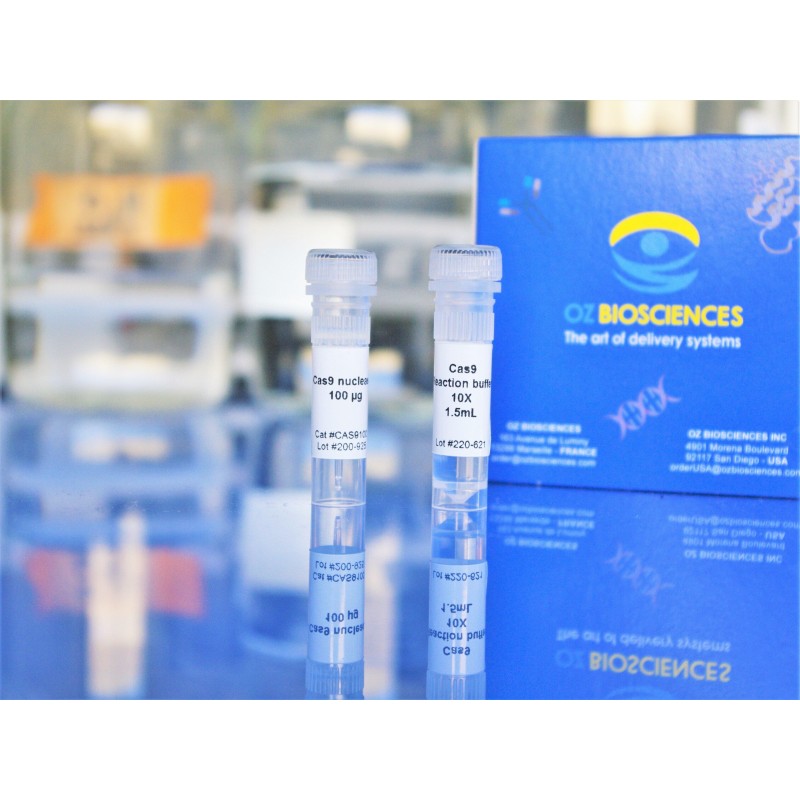



Optimized Cas9 Nuclease S. Pyogenes is designed for genome editing in living cells or organisms and also for in vitro digestion.
Increased genome editing efficiency using Cas9/RNP delivery
Successful CRISPR/Cas9 genome editing can be performed through diverse approaches (plasmids, mRNA, nuclease, viral delivery)
Why choose Cas9 Protein instead of Cas9 DNA or mRNA?
The Cas 9 recombinant protein is delivered more rapidly than nucleic acid and is fully active once inside the cells without latency period (in contrast to transcription and translation machineries required for the nucleic acids).
These features make nuclease protein delivery particularly well suited for precision genome engineering.
Efficient nucleic acid delivery represents a critical step for genome editing experiments. For the most efficient Cas9 nuclease delivery, we recommend Pro-DeliverIN CRISPR Transfection Reagent.
Sizes
Reagent supplied: Cas9 reaction buffer (10X)
Special CRISPR/Cas9 Delivery Kit
Storage: Cas9 nuclease & Cas9 reaction buffer must be stored at -20°C. Avoid freeze/thawing cycles.
Shipping condition: Dry Ice
Please log in or register to see the prices for your country
| Catalog number | Unit Size | Price excl tax | Quantity / Buy |
| CAS9050 |
50 µg Cas9 nuclease
|
$126.00
|
|
| CAS9100 |
100 µg Cas9 nuclease
|
$223.00
|
|
| CAS9500 |
500 µg Cas9 nuclease
|
$907.00
|
|
| CAS9PIC |
50 µg Cas9 nuclease + 100µL of ProDeliverIN CRISPR
|
$282.00
|
|
Related products